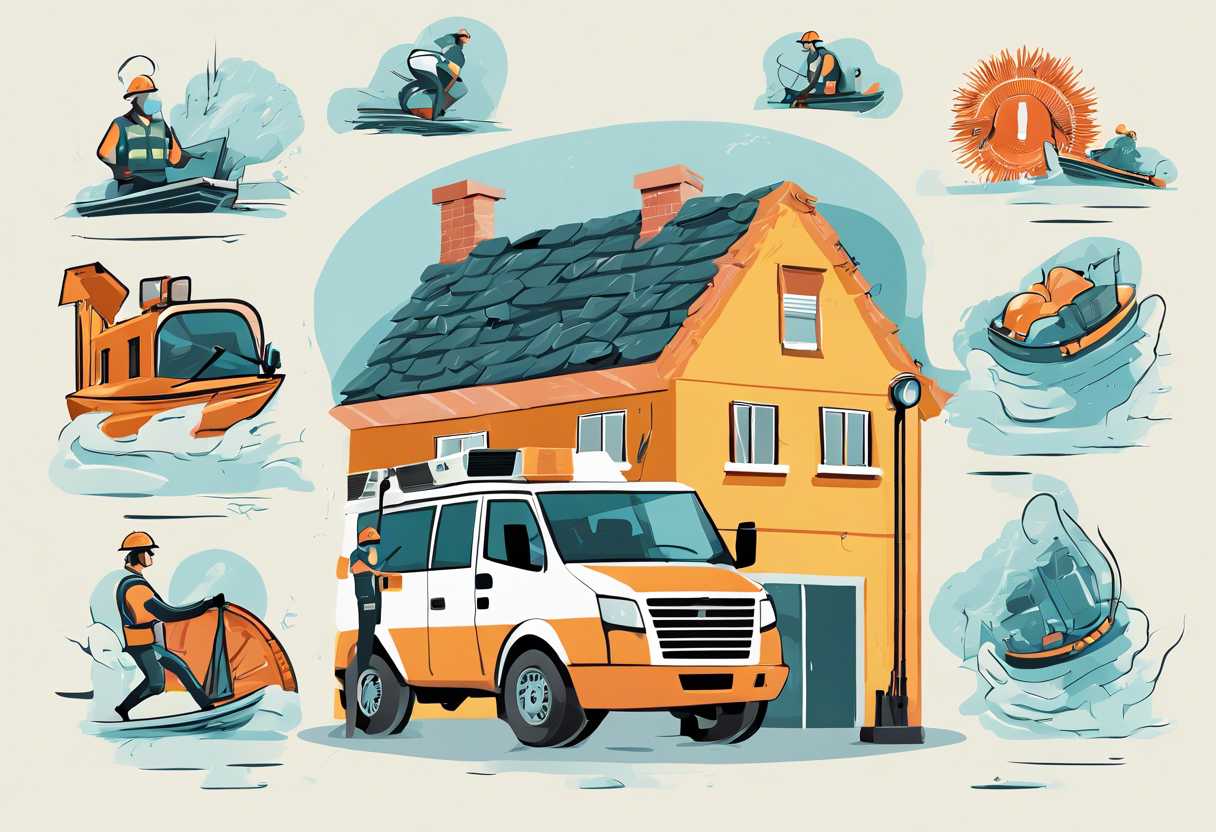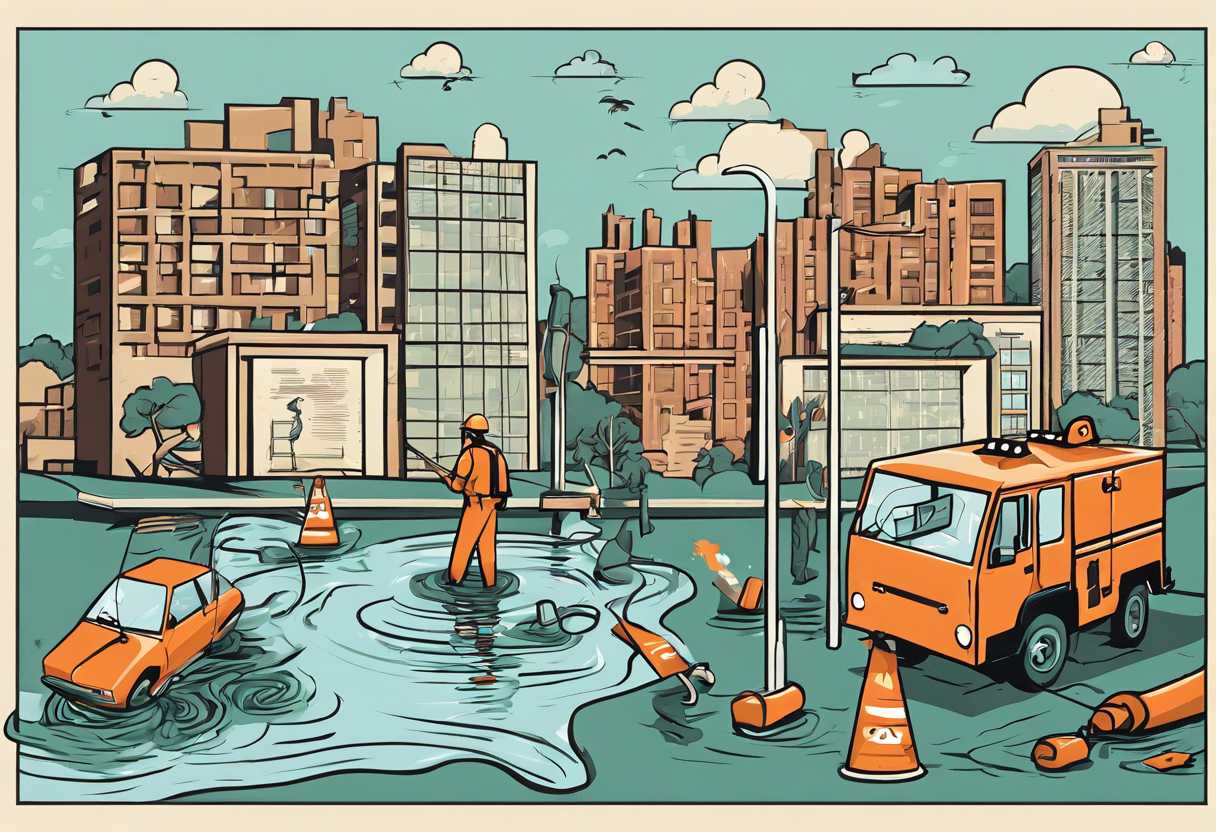Disaster management aims to reduce or avoid the impact of natural or man-made disasters on communities and the environment. Understanding the importance of disaster management goals is crucial in ensuring the safety and well-being of individuals and the sustainability of infrastructure. Key objectives of disaster management include reducing risks, minimizing the impact of disasters, and ensuring effective response and recovery efforts. Strategies for avoiding and mitigating disasters involve proactive measures such as land-use planning, early warning systems, and infrastructure development. Preparedness plays a vital role in disaster management aims, as it involves planning, training, and resource allocation for effective response and recovery. Ultimately, achieving sustainable development through disaster risk reduction is a key focus, as it aims to build resilient communities and minimize the long-term impact of disasters.
Understanding the Importance of Disaster Management Goals
The Role of Disaster Management Goals
Disaster management goals play a crucial role in ensuring the safety and well-being of individuals, communities, and organizations in the face of natural or man-made disasters. These goals serve as a roadmap for preparedness, response, and recovery efforts, guiding stakeholders in their efforts to minimize the impact of disasters and protect lives and property.
Setting Clear Objectives for Disaster Management
Setting clear and achievable objectives is essential for effective disaster management. These objectives should be specific, measurable, achievable, relevant, and time-bound (SMART), providing a clear framework for action and evaluation. By establishing concrete goals, organizations and authorities can better allocate resources, coordinate efforts, and track progress in disaster preparedness and response.
The Benefits of Disaster Management Goals
Having well-defined disaster management goals offers a range of benefits, including improved coordination and communication among stakeholders, enhanced resource allocation, and better decision-making during emergencies. Additionally, clear goals help build resilience within communities and organizations, fostering a proactive approach to disaster preparedness and reducing the overall impact of disasters.

Key Objectives of Disaster Management in Reducing Risks
Preparedness and Prevention
One of the primary objectives of disaster management is to focus on preparedness and prevention. This involves creating and implementing plans and strategies to minimize the impact of potential disasters. This can include conducting risk assessments, developing early warning systems, and educating the public on disaster preparedness. By being proactive in these efforts, communities can reduce the risks associated with natural or man-made disasters.
Response and Recovery
Another key objective of disaster management is to effectively respond to and recover from disasters when they occur. This involves having well-coordinated response plans in place, including emergency services, medical care, and evacuation procedures. Additionally, the focus is on providing immediate relief and aid to affected individuals and communities. The recovery phase involves rebuilding infrastructure, restoring essential services, and providing support for those who have been impacted by the disaster.
Risk Reduction and Mitigation
Disaster management also aims to reduce risks and mitigate the impact of disasters on communities. This can involve implementing measures to strengthen infrastructure, such as building codes and land-use planning, to minimize the vulnerability of buildings and critical facilities. Additionally, efforts to protect natural resources and ecosystems can help reduce the impact of disasters, such as flooding or landslides. By focusing on risk reduction and mitigation, the goal is to minimize the potential damage and loss caused by disasters.

Strategies for Avoiding and Mitigating Disasters
Risk Assessment and Prevention
One of the most crucial strategies for avoiding and mitigating disasters is conducting a thorough risk assessment. This involves identifying potential hazards and vulnerabilities within your organization or community. By understanding the specific risks you face, you can develop targeted prevention measures to minimize the likelihood of a disaster occurring. This may include implementing safety protocols, investing in infrastructure improvements, and creating emergency response plans.
Emergency Preparedness and Response
Being prepared for a disaster is essential for minimizing its impact. This involves developing comprehensive emergency response plans that outline specific actions to be taken in the event of a disaster. This may include establishing evacuation procedures, designating emergency shelters, and ensuring access to essential resources such as food, water, and medical supplies. Additionally, training staff or community members in emergency response protocols can help ensure a swift and effective response when disaster strikes.
Collaboration and Communication
Effective collaboration and communication are key components of disaster avoidance and mitigation. This includes working with relevant stakeholders such as government agencies, non-profit organizations, and community members to develop and implement disaster preparedness initiatives. Additionally, establishing clear communication channels for disseminating critical information during a disaster is essential for ensuring the safety and well-being of those affected. This may involve utilizing various communication tools such as social media, emergency alert systems, and community outreach programs.
The Role of Preparedness in Disaster Management Aims
Importance of Preparedness
Preparedness plays a crucial role in disaster management aims. It involves the planning, training, and resources necessary to effectively respond to and recover from a disaster. By being prepared, communities and organizations can minimize the impact of disasters and save lives. *Preparedness also helps in reducing the economic and social disruption caused by disasters, making it an essential component of disaster management.*
Key Elements of Preparedness
There are several key elements of preparedness that are essential for effective disaster management. These include *risk assessment and planning, early warning systems, communication strategies, resource allocation, and training and drills.* Each of these elements is critical in ensuring that communities and organizations are ready to respond to disasters in a coordinated and effective manner.
Benefits of Preparedness
The benefits of preparedness in disaster management are numerous. *By being prepared, communities can reduce the loss of life and property, minimize the need for external assistance, and expedite the recovery process.* Additionally, preparedness can help build resilience in communities, enabling them to bounce back more quickly from disasters. *Investing in preparedness can also result in long-term cost savings, as the impact of disasters is reduced.*
Achieving Sustainable Development through Disaster Risk Reduction
The Importance of Disaster Risk Reduction
Disasters, whether natural or man-made, can have devastating effects on communities, economies, and the environment. Implementing effective disaster risk reduction measures is crucial for achieving sustainable development and resilience. By reducing the impact of disasters, we can protect lives, livelihoods, and infrastructure, and ensure the long-term well-being of communities.
Key Strategies for Disaster Risk Reduction
One of the most effective strategies for disaster risk reduction is early warning systems. These systems use technology and communication networks to provide timely and accurate information about impending disasters, allowing communities to take proactive measures to minimize the impact. Another important strategy is land-use planning, which involves identifying and managing areas that are prone to natural hazards, such as floods or landslides, to prevent or minimize damage.
- Early warning systems
- Land-use planning
- Community-based disaster risk management
- Investing in resilient infrastructure
- Capacity building and education
The Role of Technology in Disaster Risk Reduction
Advancements in technology have significantly improved our ability to predict, monitor, and respond to disasters. Remote sensing and geographic information systems (GIS) allow for the mapping of hazard-prone areas and the identification of vulnerable populations, enabling targeted disaster risk reduction efforts. Additionally, social media and mobile apps have become valuable tools for disseminating information and coordinating response efforts during disasters.
| Technology | Role in Disaster Risk Reduction |
| Remote sensing | Mapping hazard-prone areas |
| GIS | Identifying vulnerable populations |
| Social media | Disseminating information |
| Mobile apps | Coordinating response efforts |
Conclusion
Understanding the importance of disaster management goals is crucial in ensuring the safety and well-being of communities and individuals. By identifying key objectives and implementing effective strategies, disaster management aims to reduce and avoid the devastating impacts of natural and man-made disasters.
Through proactive measures and preparedness, the goal of disaster management is to mitigate risks and minimize the potential for loss of life and property. By prioritizing sustainable development and disaster risk reduction, we can work towards creating resilient and thriving communities that are better equipped to face future challenges.
As we continue to navigate an increasingly unpredictable world, it is essential for individuals, organizations, and governments to prioritize disaster management aims. By working together and taking proactive steps, we can build a safer and more secure future for all.
Stay informed, stay prepared, and join the effort to reduce and avoid the impact of disasters in our communities.

